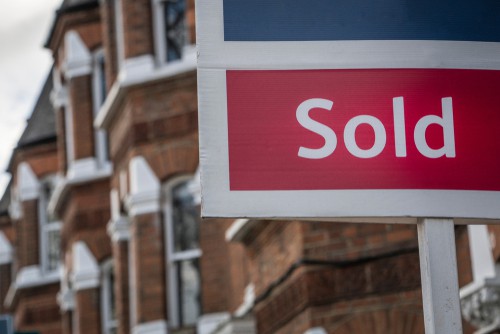
This equates to just 10,030 fewer homes than those sold in London during the whole of 2020 (71,860).
While overall transaction numbers in Great Britain have risen by 52% during the first six months of the year compared with the same period in 2019, Londoner purchases outside the capital are up by 85% on the 33,480 homes they bought in H1 2019.
So far this year Londoners made up 8.6% of all buyers outside the capital, the highest proportion on record and up from 6.6% in 2020.
The average Londoner paid £389,975 for their new property, which means Londoners have spent a collective total of £24.1bn on homes outside the capital so far this year, more than twice the £11.9bn they spent in H1 2019.
This year’s figure roughly equates to the total value of all homes sold in the South West in 2020 (£24.9bn).
While those selling a home in London to make a permanent move out of the capital accounted for the majority (55%) of buyers purchasing elsewhere in Great Britain, first-time buyers made up a quarter of Londoners buying outside the capital during the first half of this year.
This proportion has been growing over time, but the pandemic has accelerated the change and meant that 40% of first-time buyers left London to purchase their first home.
The average first-time buyer spent £318,300 on their first home outside the capital, £160,000 or 33% less than someone who sold a home in London to move.
Overall Hamptons’ estimate that movers and first-time buyers purchased 49,470 homes outside the capital, more than the total number of homes sold in Wales last year (44,960).
Meanwhile investors and second home buyers made up 20%, equating to a further 12,360 house purchases – nearly the same number of homes sold in Birmingham in 2019 (12,800).
The average Londoner who bought outside the capital purchased 34.6 miles away, the longest distance since our records began and 12% or 3.6 miles further than pre-pandemic in 2019.
Movers purchased 32.1 miles away, while first-time buyers stayed a little closer to the M25, moving 21.9 miles on average.
Meanwhile investors, in search of higher yields, and second home buyers are prepared to buy further away – 108.7 miles and 96.2 miles respectively.
Moving an average of 34.6 miles means 75% of London buyers purchased their property in Southern England. 41% of London buyers bought in the South East, while 27% headed for the East of England.
Three in five London leavers moved to a small town or suburban location, while a third headed for the countryside. Just 8% bought in another city, more than a third of whom were investors.
Aneisha Beveridge, head of research at Hamptons, said: “Pandemic-fuelled city outmigration shows no signs of slowing. Despite lockdowns easing and offices and restaurants reopening, Londoners have continued to re-evaluate where they want to live, with many bringing future-planned moves forward.
“While London now attracts more buyers from outside the capital than pre-pandemic, the numbers are still low relative to those leaving, meaning London’s population is likely to fall this year.
“The mix of those buying beyond the capital though has changed, with first-time buyers more likely to leave London than ever before. While second home buyers and investors have been spurred on by the stamp duty holiday, much of the uplift in Londoners looking outside the M25 over the last year has come from those buying their first home.
“This has been largely driven by affordability and flexible working patterns that have enabled people to work from home. The capital’s loss has been the Home Counties gain.
“If current trends continue, we calculate that by the end of this year Londoners will have purchased 108,000 homes outside the capital. This will mark the first time that this figure has surpassed the100k mark since 2007, a year when nearly 1.7 million homes were sold across Great Britain.
“But given many Londoners have bought forward moves, and overall activity is predicted to slow, we expect this number to fall back over the next few years.
“Although it’s still likely to sit above the 72,000 average we saw in the three years leading up to the pandemic.”



